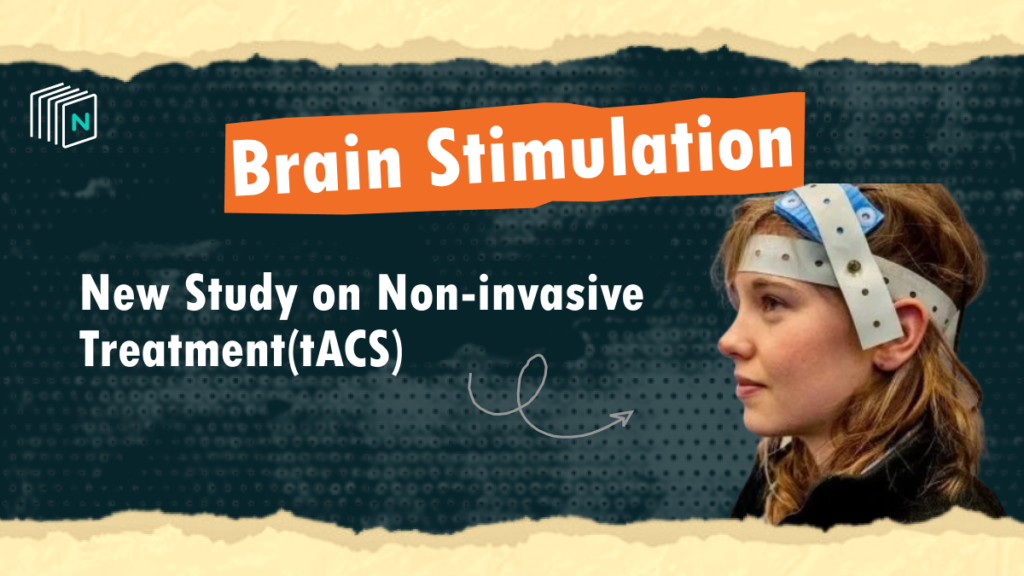New Research in Non-Invasive Brain Stimulation

Researchers at the University of Minnesota Twin Cities have achieved a milestone in neuroscience that could transform our understanding of the brain and lead to groundbreaking treatments for a variety of brain disorders. Their recent study, published in the esteemed journal Nature Communications, unveils the remarkable potential of non-invasive brain stimulation to influence specific brain mechanisms linked to human behavior.
The focal point of their discovery is transcranial alternating current stimulation (tACS), a technique involving the application of a mild electrical current to the brain. This method enables scientists to finely tune the timing of neuronal activity—a critical aspect of neuroplasticity, which underpins learning, cognition, and behavior.
Their findings focus on “neural phase precession,” which is a gradual shift in brain activity in response to external stimuli like non-invasive stimulation.
Dr. Alexander Opitz, the lead researcher, elucidated the direct impact of timing patterns on brain function. By targeting specific brain functions affecting behavior, learning, and memory, the researchers envisage harnessing this technique’s power to develop more effective treatment options for psychiatric and neurological disorders.
But how did they arrive at these conclusions?
Their study employed a multidisciplinary approach, integrating computational models, human trials, and animal studies. Through this comprehensive strategy, the researchers demonstrated that external stimulation could indeed modulate brain activity over time, offering fresh insights into the brain’s adaptive capacity.
The induction of phase precession using tACS was consistent across all three investigative avenues:
1. Computer Models: Advanced computer simulations enabled the modeling of tACS effects on individual brain cells and neural networks.
2. Human Participants: Volunteers underwent tACS while their brain activity was monitored using electroencephalography (EEG), providing insights into brain cell firing timing and synchronization.
3. Animal Studies: Tiny electrodes implanted in animal brains facilitated the direct recording of individual neuron activity, revealing the influence of tACS on firing patterns.
The consistency of their observations across diverse methodologies strengthens the validity of their findings and underscores the universality of neural phase precession in the brain.
For individuals grappling with memory decline due to aging or neurological conditions, or those encountering learning difficulties, this research presents the promise of significant cognitive enhancements.
The long-term vision of this research is to apply the technique in the treatment of psychiatric and neurological disorders.
Opitz hopes that this discovery will help bring improved knowledge and technology to clinical applications, including:
- Schizophrenia: Disruptions in brain activity and thought processes characteristic of schizophrenia could potentially be addressed through tACS-induced modulation of neural timing in specific brain regions.
- Depression: Abnormal activity patterns in certain brain circuits are implicated in depression. tACS may offer a non-invasive avenue to regulate these circuits, potentially complementing traditional medication.
- Alzheimer’s Disease: This neurodegenerative condition disrupts memory and cognition. tACS could potentially aid by enhancing neuroplasticity and fostering the formation of new neural connections.
- Parkinson’s Disease: Anomalies in brain circuitry governing movement are associated with Parkinson’s disease. tACS holds promise for regulating these circuits and ameliorating motor control.
More research is needed to improve the technique and fully realize its therapeutic potential, but this study marks a major achievement in brain science.
This groundbreaking discovery opens doors to novel clinical applications, with the potential to revolutionize the treatment landscape for brain disorders. Dr Opitz believes that this research could lead to improved patient-specific therapies, providing potential solutions for those dealing with severe neurological and psychiatric conditions.
Journal reference:
Wischnewski, M., et al. (2024). Induced neural phase precession through exogenous electric fields. Nature Communications. doi.org/10.1038/s41467-024-45898-5.
Until then,
follow Neureads for more.

